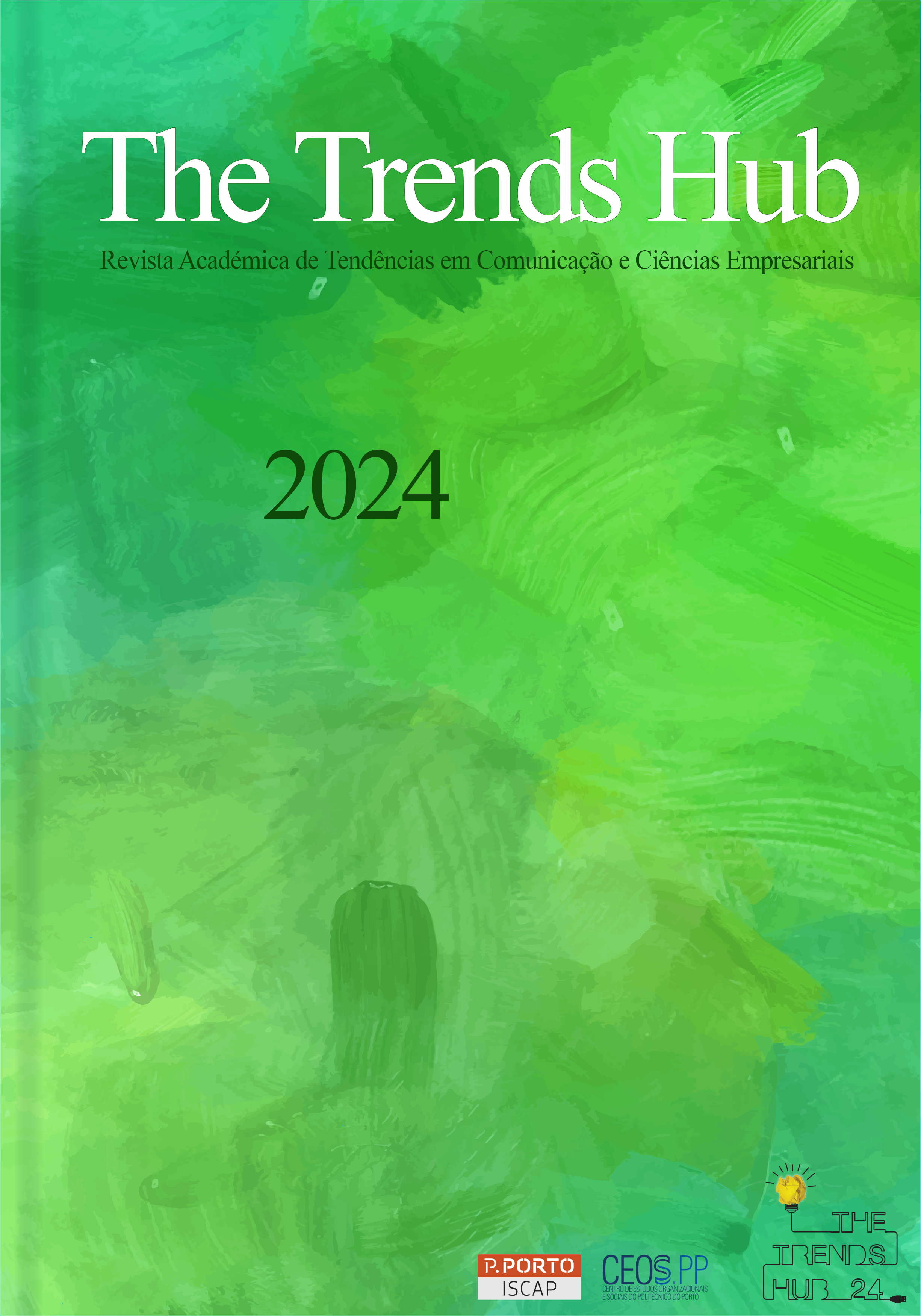O cérebro é que paga: a experiência do consumidor no processo de compra
DOI:
https://doi.org/10.34630/tth.vi4.5684Palavras-chave:
NEUROMARKETING, Comportamento do consumidor, Experiência do consumidor, CÉREBRO, PROCESSO DE DECISÃO DE COMPRAResumo
Na Era da Informação, os breves períodos de atenção e a intensa concorrência destacam a necessidade de entender o complexo funcionamento do cérebro humano para se destacar no mercado. O Neuromarketing surge como uma ferramenta essencial para compreender como as pistas sensoriais, emoções e tendências cognitivas influenciam as decisões de compra. Estudos mostram que essas escolhas são frequentemente tomadas de forma subconsciente, sendo afetadas por fatores emocionais e memórias inconscientes. O uso de técnicas de neuroimagem, como fMRI e EEG, revela que o cérebro desempenha um papel crucial na formação das preferências do consumidor. Por exemplo, cores e aromas específicos podem desencadear respostas automáticas. Portanto, compreender esses mecanismos é fundamental para ajustar produtos, embalagens e mensagens de marketing e desenvolver estratégias mais eficazes e impactantes, alinhadas com as preferências do consumidor.
Referências
Ariely, D., & Berns, G. S. (2010). Neuromarketing: the hope and hype of neuroimaging in business. Nature Reviews Neuroscience, 11(4), 284–292. https://doi.org/10.1038/nrn2795
Hennig-Thurau, T., Gwinner, K. P., & Gremler, D. D. (2002). Understanding Relationship Marketing Outcomes. Journal of Service Research, 4(3), 230–247. https://doi.org/10.1177/1094670502004003006
Kahneman, D. (2011). Thinking, Fast and Slow. Farrar, Straus and Giroux.
Kotler, P., Kartajaya, H., & Setiawan, I. (2017). Marketing 4.0 : moving from traditional to digital. John Wiley & Sons, Inc., Cop.
Krishna, A. (2012). An integrative review of sensory marketing: Engaging the senses to affect perception, judgment and behavior. Journal of Consumer Psychology, 22(3), 332–351. https://doi.org/10.1016/j.jcps.2011.08.003
Lee, N., Broderick, A. J., & Chamberlain, L. (2007). What is “neuromarketing”? A discussion and agenda for future research. International Journal of Psychophysiology : Official Journal of the International Organization of Psychophysiology, 63(2), 199–204. https://doi.org/10.1016/j.ijpsycho.2006.03.007
Lindstrom, M. (2008). Buyology: Truth and Lies About Why We Buy. Crown Business.
McClure, S. M., Li, J., Tomlin, D., Cypert, K. S., Montague, L. M., & Montague, P. Read. (2004). Neural Correlates of Behavioral Preference for Culturally Familiar Drinks. Neuron, 44(2), 379–387. https://doi.org/10.1016/j.neuron.2004.09.019
Morin, C. (2011). Neuromarketing: The New Science of Consumer Behavior. Society, 48(2), 131–135. springer. https://doi.org/10.1007/s12115-010-9408-1
Pine II, B., & Gilmore, J. (2002). The experience economy: work is theatre & every business a stage: goods and services are no longer enough. Journal of Revenue and Pricing Management, 1. https://www.researchgate.net/publication/292752215_The_experience_economy_work_is_theatre_every_business_a_stage_goods_and_services_are_no_longer_enough
Reichheld, F. F. (2003, December). The one number you need to grow. Harvard Business Review. https://hbr.org/2003/12/the-one-number-you-need-to-grow
Verhoef, P. C., Reinartz, W. J., & Krafft, M. (2010). Customer Engagement as a New Perspective in Customer Management. Journal of Service Research, 13(3), 247–252. https://doi.org/10.1177/1094670510375461
Knutson, B., Rick, S., Wimmer, G. E., Prelec, D., & Loewenstein, G. (2007). Neural Predictors of Purchases. Neuron, 53(1), 147–156. https://doi.org/10.1016/j.neuron.2006.11.010
Palmer, S. E., Schloss, K. B., & Sammartino, J. (2013). Visual Aesthetics and Human Preference. Annual Review of Psychology, 64(1), 77–107. https://doi.org/10.1146/annurev-psych-120710-100504
Mahdavi, M., Barbosa, B., Oliveira, Z., & Chkoniya, V. (2020). Sounds of scents: olfactory-auditory correspondences in the online purchase experience for perfume. Review of Business Management, 22(4), 836–853. https://doi.org/10.7819/rbgn.v22i4.4083
Wood, S. (2020, October 26). A Positive Buying Experience Is Crucial for Customer Happiness. Learn.g2.com. https://learn.g2.com/buying-experience
Downloads
Publicado
Como Citar
Edição
Secção
Licença
Direitos de Autor (c) 2024 The Trends Hub

Este trabalho encontra-se publicado com a Licença Internacional Creative Commons Atribuição-NãoComercial-SemDerivações 4.0.


